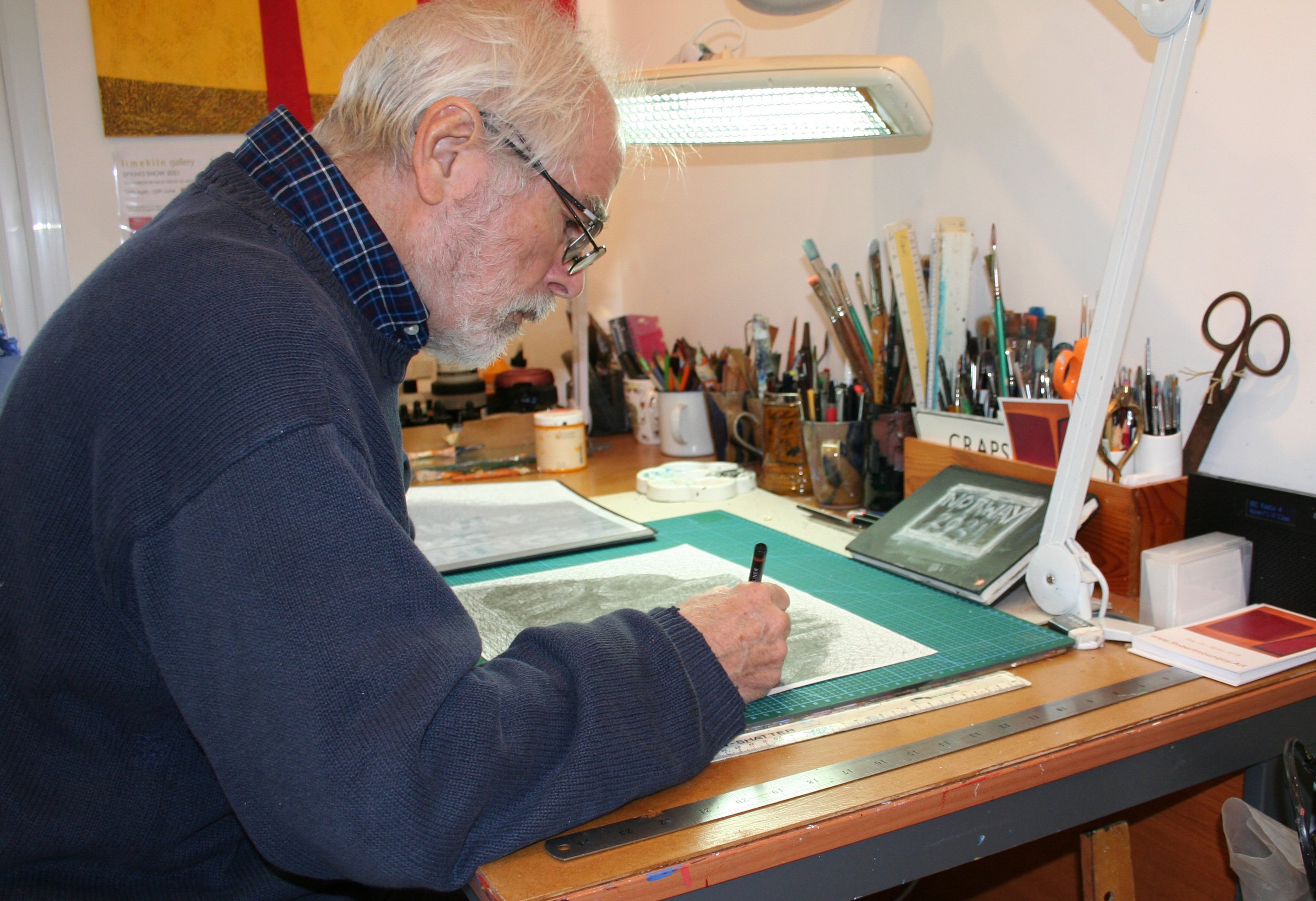The Artist answers some ‘frequently asked questions’.
Drawing
All of my work is developed from observational drawing. I do quick sketches (‘in the field’) which I may complete later when in easier and private surroundings.
In the studio I rework and enlarge my drawings. Through this process I re-engage with the subject, enhance my understanding and work out a way of progressing my thoughts.
I rarely set out with any fixed intentions - I select the subject and start drawing; perhaps this is an artist’s way of ‘reading around the subject’, and see where it leads.
In the past I kept working drawings private. My scratchy sketches were explorative, notes to record observations and not intended for display. I was somehow embarrassed at their lack of finesse; I kept them hidden away and discarded many once the paintings were completed.
Now I accept that the sketches and drawings are part of the story and I openly share them.
Influences
I am often asked what has influenced my work. Usually, I reply with a short rebuff - life, survival, people, the world around me. But I think the questioner is asking what artists have influenced me? This is a difficult one as I have spent all my working life teaching art and have needed to gain knowledge about all styles, genres and periods and be prepared to share that understanding without bias or prejudice. I have had to openly embrace the full range of approaches and all of this has invaded my subconscious.
So it is difficult to pick out any prominent influences but my journey began with Terry Frost and the British Modernists and perhaps I feel more affinity with this movement than any other.
Mystery
I have been a teacher all my working life and built into me a need to share understanding and encourage debate. I feel a need to demystify my work; explain its evolution and resolution. There was a time when I found this difficult but now I think it is honest and open and it is ART.
Selling
I once had ambitions of making a living through painting and have had periods when I explored commercial opportunities. In hindsight I am thankfully that these did not develop. I have supported myself and family through teaching which has left me free to produce the art that I want to make without any thoughts of ‘will it sell’?
If someone likes my painting and is happy to pay a reasonable price then I am delighted but I am an uncomfortable shopkeeper. A successful exhibition for me is one that attracts a lot of visitors and generates lively debate … but somehow we have to meet the costs.
I need commercial galleries to show my work and I am very appreciative of their support. I often feel guilty that I am not more commercial. I do not sell work through my website but prefer to let those galleries that have supported me to act as agents and I pay them a commission. I do not sell directly but if you are interested in buying any of my paintings please contact one of the galleries listed on the Sales page or mentioned in ‘Events’.
Techniques
I seem to develop a new technique with every project. The demand to find a way of expressing something new seems to bring about a new way (for me) of using paint. I avoid gimmicks or stunts - somehow the right way of applying paint comes from the struggle with the subject. Spain - layering with a flat semi dry brush created the textures of the stucco walls that had inspired me, Norway - taping off the underpainting to create edges helped create the feeling of isolation and severity. Waterlines - scratching and scraping layers echoed with the abrasion of the industrial waterfront.
I mostly work in acrylic on board. Acrylic dries quickly and lets me paint over or add layers within hours but it does change tone as it dries and I have to be conscious of this. I now use oils for portraits as they do not change so much as they (slowly) dry.
Boards stay flat and are less likely to warp as the layers build up. I can also abuse the painted surface with scratching and scraping with some impunity. The boards are sealed with PVA and given several coats of primer,
Changes in approach
I spent over ten years painting still life groups, often viewed from above. I was happy sitting in my studio dabbing away with the tip of a size 1 brush and then at a mixed exhibition I met someone who I did not know but who knew my work. “You can always recognise a Mountjoy” she said. “You have a distinct style”. This signalled a need to move on - I needed to explore other options and … take some risks.
I now work on focused projects that take a year or two to complete. Each begins with drawing and then the redrawing that allows me to meditate on the subject and find a way of expressing the ideas in paint.
Technology
As a teacher I was lucky to have been at the forefront of the information technology revolution and became familiar with digital interfaces. I use digital platforms to experiment and refine ideas. It is cleaner and quicker than traditional collage but somehow the physical labour is still needed … and it makes a difference. I use both.


